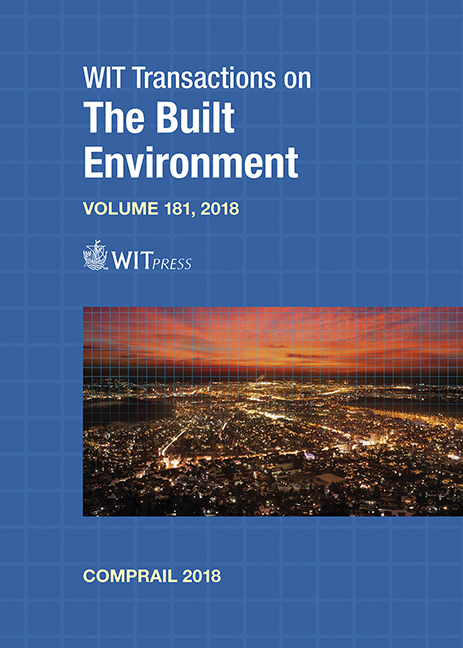DEVELOPMENT OF METAL RUBBER PADS FOR HIGH SPEED RAILWAYS
Price
Free (open access)
Transaction
Volume
181
Pages
12
Page Range
487 - 498
Published
2018
Size
990 kb
Paper DOI
10.2495/CR180431
Copyright
WIT Press
Author(s)
ISIDRO A. CARRASCAL, ALEJANDRO PÉREZ, JOSÉ A. CASADO, SORAYA DIEGO, JUAN A. POLANCO, DIEGO FERREÑO, JUAN J. MARTÍN
Abstract
Polymeric materials (such as thermoplastics, rubbers, polyurethanes, etc.) have been extensively used to manufacture resilient rail pads; plastics, however, suffer from a series of intrinsic limitations since the environmental agents (UV rays, temperature, air humidity, etc.) as well as the compressive fatigue loads negatively affect their mechanical properties. This study proposes the use of a novel solution, the so-called “metal-rubber” pads, as a reliable alternative to polymer pads. They are made of stainless steel wire, knitted, embossed and cold-pressed down into a mould to achieve the required shape and size. The thorough experimental campaign carried out to validate the metal rubber pads includes the following tests: (i) Static and dynamic stiffness as indicated in EN 13146-9+A1 and EN 13481-2 guidelines respectively. Furthermore, by changing design factors like wire diameter, mesh density and geometrical shape variations, the evolution of stiffness characterization results is analysed. (ii) Corrosion resistance under UNE-EN 13416-5 and UNE-EN ISO 9227 guidelines. Metal rubber performance under these guidelines was compared with six polymeric materials. Four of them are employed in numerous railway lines. Results reveal a good fulfilment of requirements. Despite resulting in relatively higher values than recommended, both static and dynamic stiffness reach a close range to traditionally employed EVA and TPE-M. In the case of fatigue aging, the foremost wearing suffered by metal cushion occurs mainly in the early cycling stages, although the total cumulate damage is also comparable to traditional. Finally, it is found that design factors have a great influence over static and dynamic stiffness. Porosity reduction reveals to be a key factor to improve stiffness towards lower values as recommended in literature.
Keywords
rail pads, metal rubber, stainless steel, stiffness, design factors, softening





